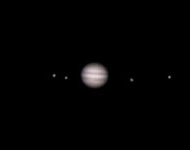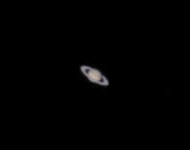I’ve been an amateur astronomer for quite a while, and mostly do astrophotography from the middle of a city (A Bortle ‘White Zone’).
Here are some tips/observations:
-
From a city you can forget about all the dim objects - nebulas, most galaxies, etc. You can see Andromeda, Orion, and maybe a couple of others, but that’s about it. With astrophotography you can capture a whole lot more, but there are challenges to astrophotography from inside a light polluted area.
-
Your primary targets are going to be the moon, the brighter planets, globular clusters, open star clusters, a handful of bright nebula and a few bright galaxies like Andromeda, M51 and M82. The galaxies will look like faint smudges in almost any telescrope when using your eyeballs.
-
For planets, you don’t need aperture. You need focal length. Magnification is king. So reflectors and refractors are not ideal for planetary viewing. High magnification and narrow fields of view are also helpful in a light-polluted area.
-
Binoculars will easily show you some bands on Jupiter, Jupiter’s moons and Saturn’s rings, but the moons will be pinpoints. Mars will be a red dot. You’ll be able to see the phases of Venus, but it will also be very small. The Moon can be spectacular in binoculars, but they are best used on a tripod for that purpose. I have a pair of Celestron 10X70 astro binoculars that are decent, quite inexpensive and can be used with a tripod mount. But if you’ve tried binoculars and weren’t impressed, skip 'em.
So, all that said, from a light polluted area I would recommend as a starter scope a Celestron C90 or equivalent. This is a Maksutov-Cassegrain telescope that is very small, easy to transport, and has an incredibly good set of optics for its price point.
The drawback of Mak-Cass scopes is that they are really unsuitable for very dim, large objects like nebulae. But you aren’t going to see those anyway from in the city. For the moon and planets, a Maksutov-Cassegrain is without equal. The C90 has a 90mm primary mirror, and a 1260mm focal length. Cheaper refractors and reflectors are typically more like 700mm or less. Great for big nebulae, not so much for small bright objects.
With a 2X barlow lens and a steady tripod, you will be able to see lots of details on Jupiter like the great red spot and shadows of the moons passing over it. Features on Mars like Valles Marineris and dust storms will be visible. There are lots and lots of very cool targets on the moon, details in the rings of Saturn such as the Cassini gap and many of its moons, and lots more.
Another cool aspect of the scope is that it can also be used as a terrestrial spotting scope for birdwatching or whatever. The small size means you can use a good camera tripod and don’t have to buy an expensive tracking mount.
I do most of my photography with an 8" Celestron EdgeHD with a German Equatorial Mount for tracking. It’s about a $4000 setup, but for the moon and planets my little $249 Celestron C90 isn’t far behind.
And if you want to try some astrophotography for fun, you can use your cell phone and do ‘eyepiece projection’ by holding your phone lens up to the eyepiece. or you can buy a cheap cell phone mount.
Speaking of eyepieces… Beginners often overlook the need for good eyepieces to really enjoy looking through the scope. Cheap Plossls that come with scopes often have very little ‘eye relief’, narrow fields of view, and require precise eye placement which gets fatiguing. Better eyepieces will give you a much more comfortable viewing experience.
Here’s an example of some images that have been taken with a Celestron C90:

.The top images are taken with a 9.25" Celestron EdgeHD. The bottom three with a C90. To give you an idea of the insane value of the C90, the bigger scope costs $3750 in Canada for just the optical tube. The C90 costs about $249 with eyepiece, right angle eyepiece holder and carrying bag.
Really, any of the Mak-Cassegrains would be good. If you want to spend a little more money you can find larger ones with 102mm, 127mm or larger primary mirrors and longer focal lengths.
Also, if Celestron doesn’t have them, they are actually made in China by Synta, and sold also by Meade, Explore Scientific and other telescope manufacturers.
Another thing I would recommend for city viewing is a ‘goto’ mount, as finding targets with a high-power, narrow field of view scope is not easy. In dark zones you can ‘star hop’ to find targets, but so few stars are visible by eye in the city that you can’t do that. A goto scope will allow you to just type in a target into your phone or keypad, and the scope will slew to it. Expect to pay $400 to $700 for a Mak on a goto mount.
If you get into lunar observing, you will find something new to look at every time you go to the eyepiece, as the detail on lunar objects really ‘pops’ when they are near the lunar terminator and throwing long shadows. Many objects aren’t even visible until they are near the terminator. So every night the list of interesting objects changes.
Here’s a sample of what kind of lunar images you can see with a C90:

The crater in the middle is Clavius - famous for being the location of the lunar base in '2001 - A Space Odyssey"
If you have any questions, ask away.




